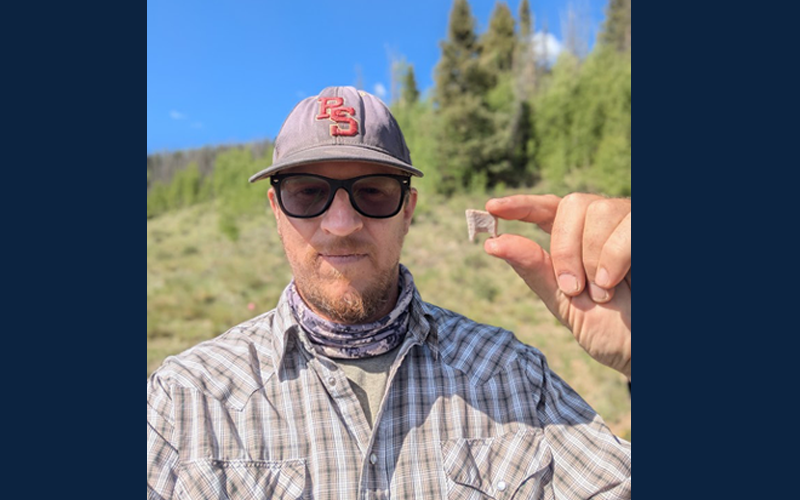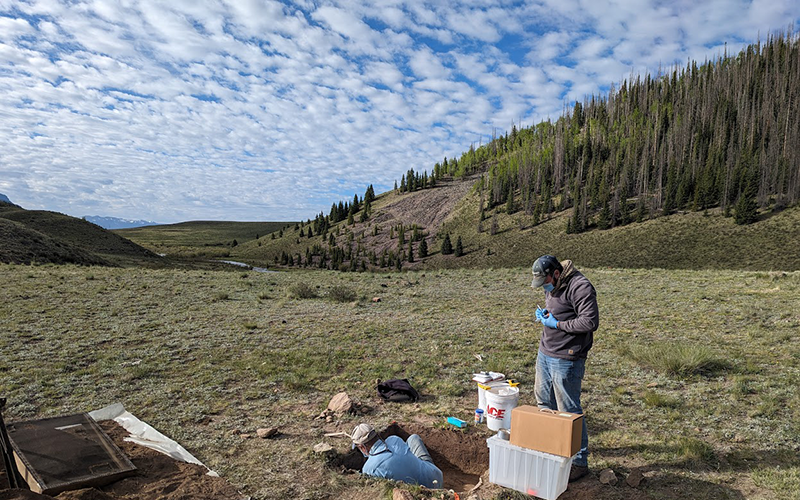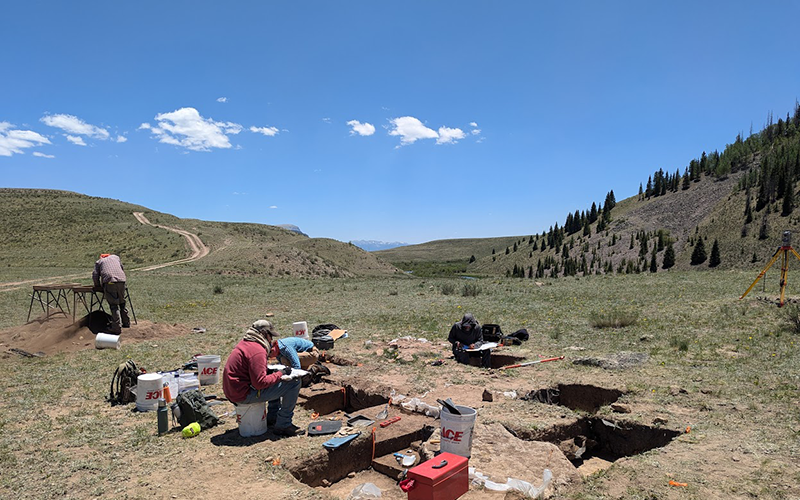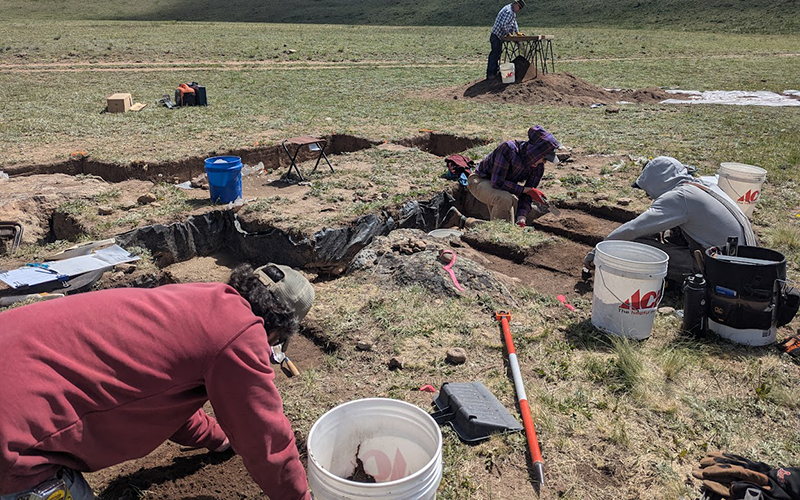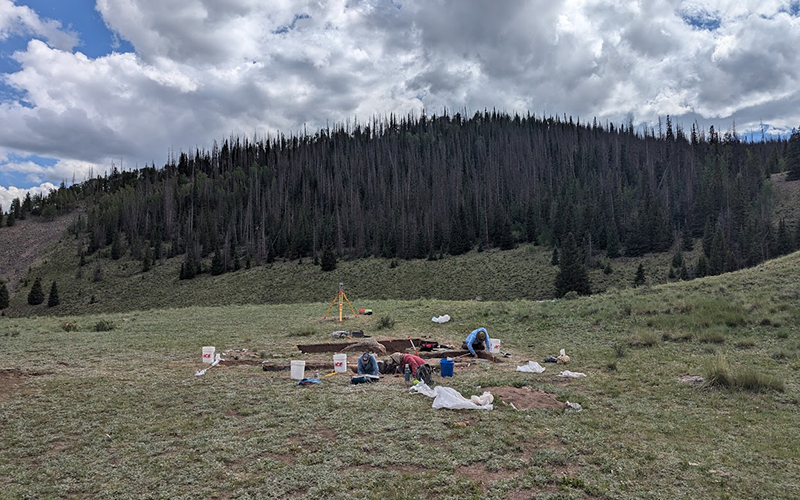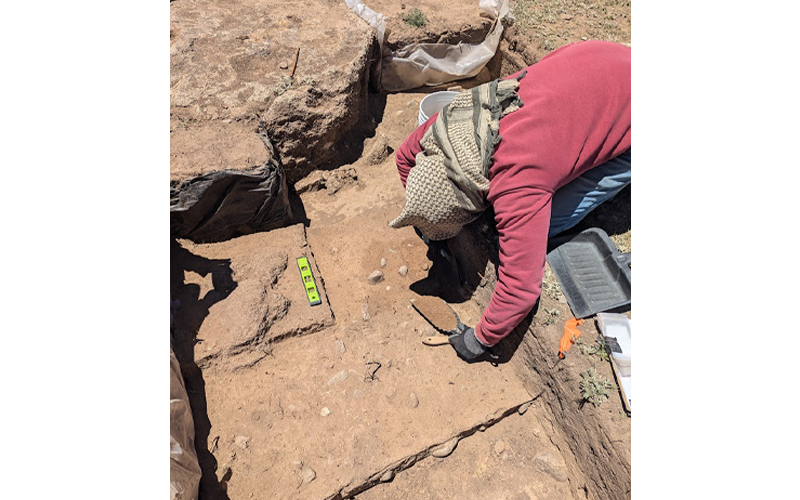Rogers State University Psychology and Sociology Department Head Dr. Brian Andrews got his hands dirty this summer as a participant in an excavation project in Colorado.
Andrews joined a multidisciplinary team of scientists including archaeologists, geologists, geneticists and other specialists for the excavation project at Black Mountain Site in Hinsdale County, Colorado, near Creed, Colorado.
“The site was originally excavated in the early 1990s by a team from the Smithsonian,” Andrews said, “but many questions about the site remained, so our team returned and continued the excavations.
“We returned to the site in 2023 and continued the work this summer (2024),” he said. “The site was occupied by people from what is known as the ‘Folsom’ culture and has been radiocarbon dated to approximately 12,500 years ago. The (Folsom) culture is identified by its time period, as well as its distinctive type of spear point.”
Fieldwork included excavations of the main camp, as well as geological work to help understand what the landscape looked like at the time of occupation, as well as how the site formed and changed over the past 12,000 years.
Work also included the collection of samples for “eDNA” – environmental DNA analysis to be run at the Copenhagen Centre for GeoGenetics.
“These samples are examined for fragments of preserved DNA that, once identified, can tell us a bit about the types of plants and animals that were in the area by the time of occupation by the Folsom people,” Andrews said.
Joined by other specialists from RSU, Southern Methodist University, University of Oregon, Adams State University, University of Arizona, Colorado Mesa University, the US Forest Service and the University of Copenhagen Center for GeoGenetics, Dr. Andrews’ work centered around a hearth feature at the site.
“We are interested in reconstructing the human behaviors and activities that took place at the site, which is situated at about 11,250 feet in elevation along a mountain pass between several prominent mountain basins and valleys that were important places for these early American hunter-gatherers,” he said. “This is where they hunted bison and other game throughout the year, as well as gathered stone raw material, plants and other things they needed.”
According to Dr. Andrews, the Black Mountain site is likely a “passover” camp that was used for travel between the mountain basins and valleys.
“The site occupants appeared to have sat around the fire where they discarded old, worn out or broken stone tools and made new ones,” he said. “No animal bones have been recovered, but that’s likely a result of the lack of preservation of organic material in the high mountain climate. The eDNA analysis should hopefully shed some light on the types of animals and plants that the site occupants were using for food.”
Dr. Brian Andrews is an anthropological archaeologist who has conducted research throughout the Great Plains and Rocky Mountains, examining questions of mobility, settlement, technology, spatial patterning and social organization.
For more information about RSU’s Department of Psychology and Sociology, visit www.rsu.edu/PS.

